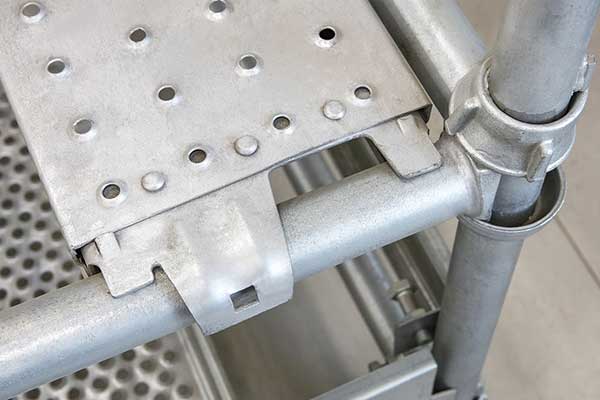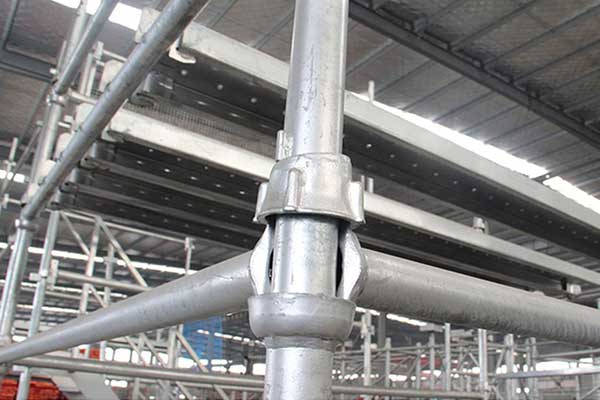What is the Standard Size of Cuplock Scaffolding?
Cuplock scaffolding is one of the most widely used modular scaffolding systems in construction and industrial projects. Its robust design, quick assembly, and versatility make it a preferred choice for various applications, including high-rise buildings, bridges, and industrial structures. One of the most common questions about cuplock scaffolding is: What is its standard size? This article will provides a detailed breakdown of the dimensions, components, and variations of cuplock scaffolding to help you make informed decisions for your construction needs.

Understanding Cuplock Scaffolding System
Cuplock scaffolding consists of vertical standards (uprights), horizontal ledgers, transoms, and other components that lock together using a cup-and-node mechanism. This system allows for quick and secure assembly, reducing labor costs and improving efficiency on construction sites.
Standard Sizes of Cuplock Scaffolding Components
1. Vertical Standards (Uprights)
Vertical standards serve as the main load-bearing members of the cuplock scaffolding system. They come in various lengths to accommodate different project requirements.
| Standard Length (mm) | Standard Length (feet) |
|---|---|
| 3000 mm | 10 ft |
| 2500 mm | 8.2 ft |
| 2000 mm | 6.6 ft |
| 1500 mm | 5 ft |
| 1000 mm | 3.3 ft |
| 500 mm | 1.6 ft |
Material: Usually made of 48.3mm diameter high-strength steel tubes with a thickness of 3.2mm or 3.5mm.
2. Horizontal Ledgers
Ledgers provide lateral support to the scaffolding system and also serve as working platforms.
| Ledger Length (mm) | Ledger Length (feet) |
|---|---|
| 2500 mm | 8.2 ft |
| 2000 mm | 6.6 ft |
| 1800 mm | 5.9 ft |
| 1500 mm | 5 ft |
| 1200 mm | 3.9 ft |
| 1000 mm | 3.3 ft |
Material: 48.3mm diameter steel tube with a thickness of 3.2mm or 3.5mm.
3. Transoms
Transoms offer additional support for platforms and increase the overall stability of the scaffolding structure. Their lengths vary depending on the required width of the working platform.
| Transom Length (mm) | Transom Length (feet) |
|---|---|
| 1800 mm | 5.9 ft |
| 1500 mm | 5 ft |
| 1200 mm | 3.9 ft |
| 1000 mm | 3.3 ft |
| 800 mm | 2.6 ft |
4. Base Jacks (Adjustable Base Plates)
Base jacks provide height adjustment to ensure stability on uneven ground. They typically range in size from 150 mm to 750 mm (6 inches to 30 inches), allowing for fine adjustments in scaffolding height.
5. Hop-Up Brackets
Hop-up brackets extend the working platform to accommodate additional workspace. They are available in sizes like 1-board, 2-board, and 3-board widths, depending on project requirements.

Customization and Variations
While the above dimensions represent the standard sizes of cuplock scaffolding components, variations exist depending on regional standards, manufacturer specifications, and project-specific needs. Custom sizes can be fabricated to meet unique construction demands.
Why Standard Sizes Matter in Cuplock Scaffolding
- Safety and Stability – Using standard sizes ensures the structural integrity of scaffolding, reducing the risk of collapse.
- Easy Assembly and Dismantling – Predefined sizes allow for quick and efficient installation.
- Cost Efficiency – Standardized components are readily available, minimizing customization costs.
- Compliance with Regulations – Many construction safety standards require scaffolding to follow specific dimensions for safe working conditions.
Conclusion
Cuplock scaffolding is a versatile and efficient system used in various construction applications. Understanding its standard sizes helps in proper planning, procurement, and safe installation. When selecting cuplock scaffolding for your project, consider factors such as load requirements, working height, and customization options to ensure optimal performance.
For high-quality cuplock scaffolding solutions that meet international standards, contact us to discuss your specific needs and get expert recommendations.
